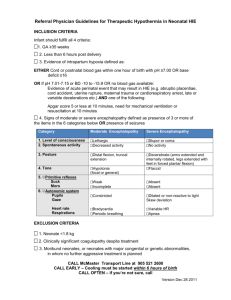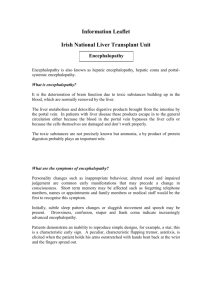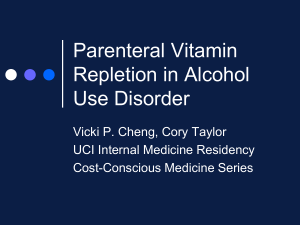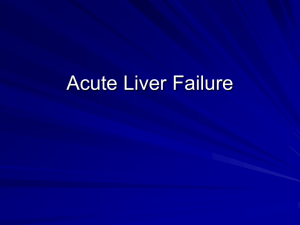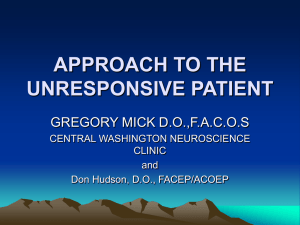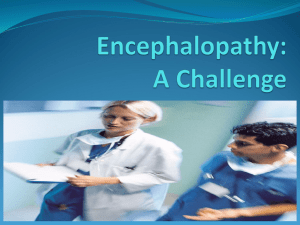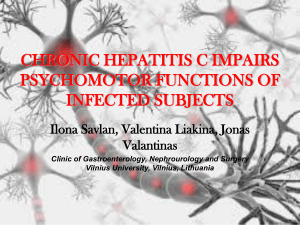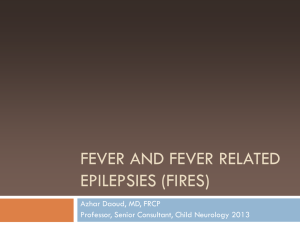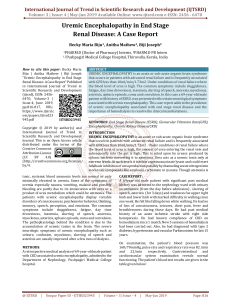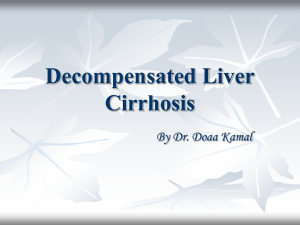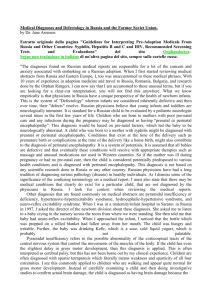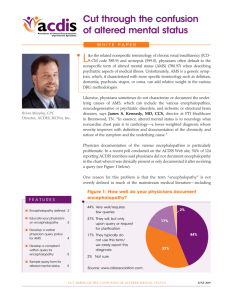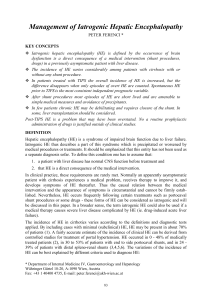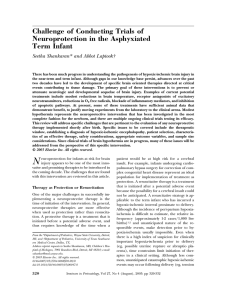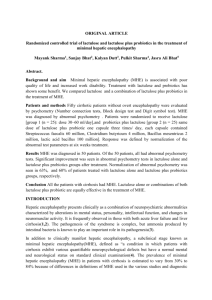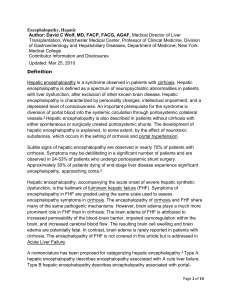Example of a research story submission
advertisement
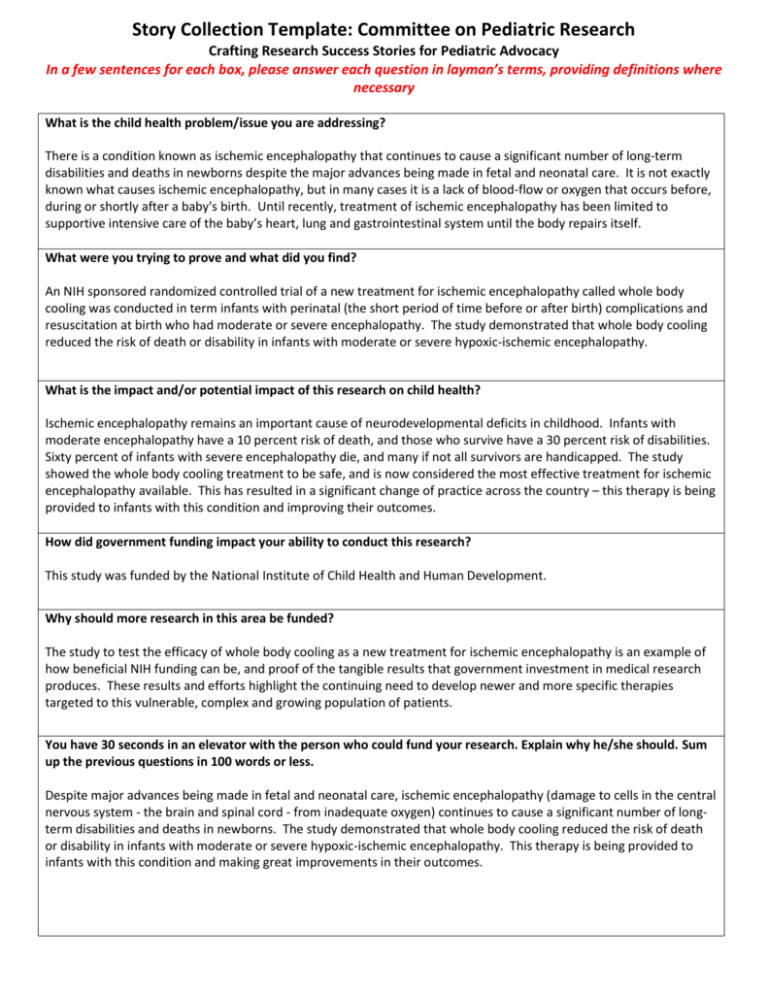
Story Collection Template: Committee on Pediatric Research Crafting Research Success Stories for Pediatric Advocacy In a few sentences for each box, please answer each question in layman’s terms, providing definitions where necessary What is the child health problem/issue you are addressing? There is a condition known as ischemic encephalopathy that continues to cause a significant number of long-term disabilities and deaths in newborns despite the major advances being made in fetal and neonatal care. It is not exactly known what causes ischemic encephalopathy, but in many cases it is a lack of blood-flow or oxygen that occurs before, during or shortly after a baby's birth. Until recently, treatment of ischemic encephalopathy has been limited to supportive intensive care of the baby’s heart, lung and gastrointestinal system until the body repairs itself. What were you trying to prove and what did you find? An NIH sponsored randomized controlled trial of a new treatment for ischemic encephalopathy called whole body cooling was conducted in term infants with perinatal (the short period of time before or after birth) complications and resuscitation at birth who had moderate or severe encephalopathy. The study demonstrated that whole body cooling reduced the risk of death or disability in infants with moderate or severe hypoxic-ischemic encephalopathy. What is the impact and/or potential impact of this research on child health? Ischemic encephalopathy remains an important cause of neurodevelopmental deficits in childhood. Infants with moderate encephalopathy have a 10 percent risk of death, and those who survive have a 30 percent risk of disabilities. Sixty percent of infants with severe encephalopathy die, and many if not all survivors are handicapped. The study showed the whole body cooling treatment to be safe, and is now considered the most effective treatment for ischemic encephalopathy available. This has resulted in a significant change of practice across the country – this therapy is being provided to infants with this condition and improving their outcomes. How did government funding impact your ability to conduct this research? This study was funded by the National Institute of Child Health and Human Development. Why should more research in this area be funded? The study to test the efficacy of whole body cooling as a new treatment for ischemic encephalopathy is an example of how beneficial NIH funding can be, and proof of the tangible results that government investment in medical research produces. These results and efforts highlight the continuing need to develop newer and more specific therapies targeted to this vulnerable, complex and growing population of patients. You have 30 seconds in an elevator with the person who could fund your research. Explain why he/she should. Sum up the previous questions in 100 words or less. Despite major advances being made in fetal and neonatal care, ischemic encephalopathy (damage to cells in the central nervous system - the brain and spinal cord - from inadequate oxygen) continues to cause a significant number of longterm disabilities and deaths in newborns. The study demonstrated that whole body cooling reduced the risk of death or disability in infants with moderate or severe hypoxic-ischemic encephalopathy. This therapy is being provided to infants with this condition and making great improvements in their outcomes.
